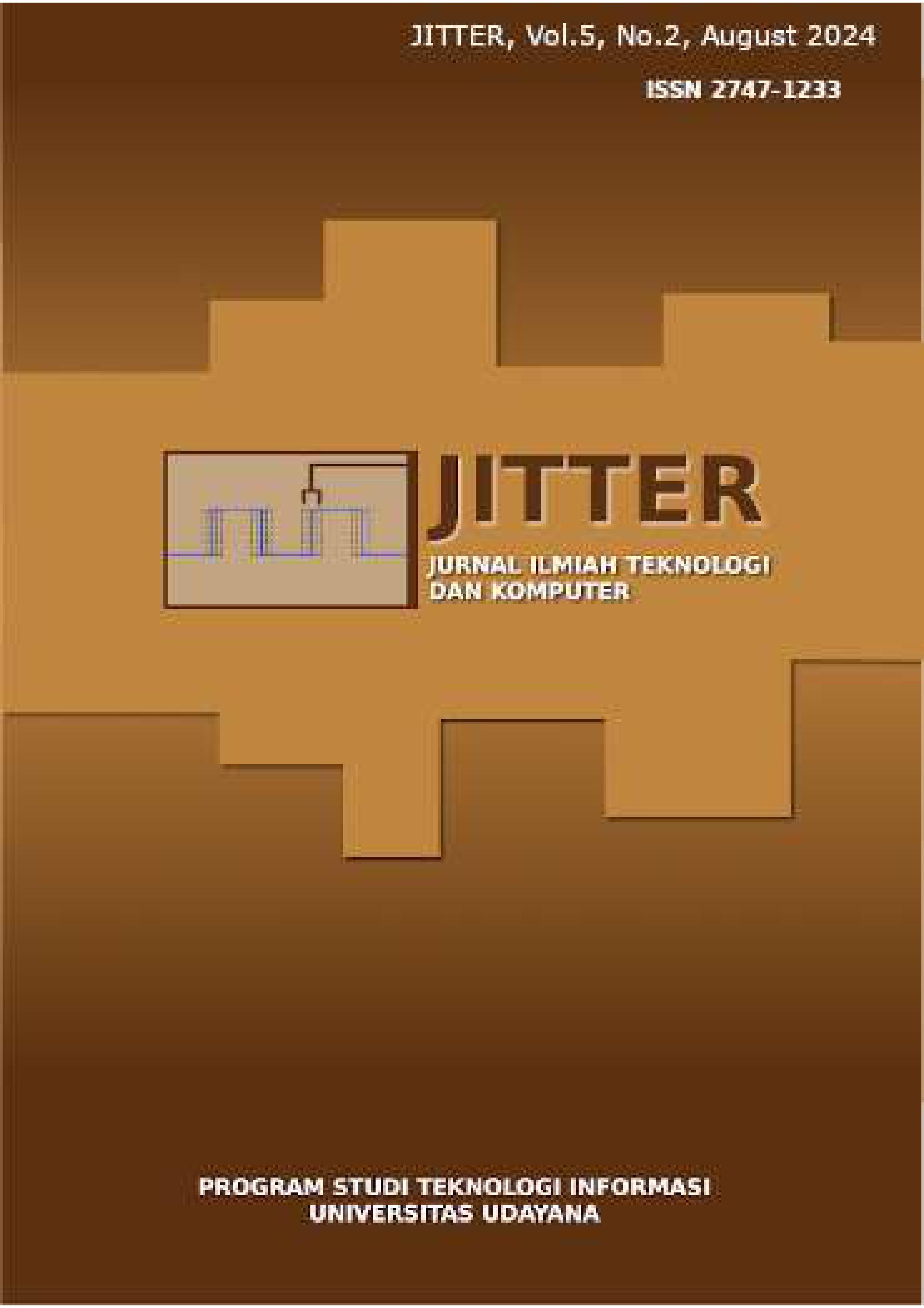Implementation of CRM (Customer Relationship Management) Using Zoho CRM (Case Study: Villa Gangga)
Abstract
The main objective of initiating a business is to achieve maximum profit. To attain this goal, a company must be capable of utilizing existing technology to compete and cultivate a loyal customer base. Villa Gangga is a family-oriented accommodation business located in the Ababi Village, Abang District, Karangasem Regency, Bali. The business has been running for 15 years, relying on a conventional CRM system that only uses manual record-keeping and workflow design. However, this system is susceptible to human errors and other issues. Therefore, in this study, Customer Relationship Management (CRM) implementation was carried out using the Low Code development platform named Zoho Creator to enhance customer satisfaction by improving the relationship between buyers and sellers and addressing customer complaints. The research results indicate that the CRM implementation at Villa Gangga has enhanced business performance. Consequently, the implementation of CRM using Zoho Creator at Villa Gangga is highly recommended for entrepreneurs in the tourism industry seeking to enhance service quality and customer satisfaction.
References
[2] V. U. T. Ellynia, “Penerapan Customer Relationship Management (CRM) pada Aplikasi Pengiriman Pesan Instan,” vol. V, no. 1, pp. 20–26, 2014.
[3] S. Kosasi, “Perancangan Sistem Electronic Customer Relationship Management Untuk Mempertahankan Loyalitas Pelanggan,” J. Sist. Inf. DAN Teknol. Inf., vol. 4, no. Oktober 2015, pp. 92–102, 2015.
[4] E. Nurwati, A. Bintarto, and A. A. Kristiadi, “PENGARUH CUSTOMER RELATIONSHIP MANAGEMENT TERHADAP KEPUASAN DAN LOYALITAS JIMEA | Jurnal Ilmiah MEA ( Manajemen , Ekonomi , dan Akuntansi ),” vol. 5, no. 1, pp. 1322–1338, 2021.
[5] A. Nugroho, “Customer relationship management implementation in the small and medium enterprise,” AIP Conf. Proc., no. March, 2018, doi: 10.1063/1.5028076.
[6] B. Hardjono and L. P. San, “Customer Relationship Management Implementation and its Implication to Customer Loyalty in Hospitality Industry,” J. Din. Manaj., vol. 8, no. 1, pp. 92–107, 2017, doi: 10.15294/jdm.v8i1.10414.
[7] N. L. M. Sugiarn, D. Pramana, and N. N. H. Puspita, “Implementasi CRM (Customer Relationship Management) Pada Sistem Informasi Travel X Berbasis Web,” J. Sist. dan Inform., vol. 9, p. 53, 2015.
[8] H. B. Akhmad Izzudin Amin, Erlan Darmawan, “Implementasi CRM (Customer Relationship Management) pada Sistem Informasi Reservasi Fotografi Berbasis Web di Toko Aini Photo Kuningan,” J. Sist. dan Inform., vol. 9, p. 9, 2018.
[9] B. Hardjono and L. P. San, “Customer Relationship Management Implementation and its Implication to Customer Loyalty in Hospitality Industry Implementasi Manajemen Hubungan Pelanggan dan Implikasinya terhadap Loyalitas Pelanggan pada Industri Rumah Sakit,” vol. 8, no. 36, pp. 92–107, 2017.
[10] V. Guerola-Navarro, H. Gil-Gomez, R. Oltra-Badenes, and J. Sendra-García, “Customer relationship management and its impact on innovation: A literature review,” J. Bus. Res., vol. 129, no. November 2020, pp. 83–87, 2021, doi: 10.1016/j.jbusres.2021.02.050.
[11] D. R. Wicaksono, “Implementasi Customer Relationship Management (CRM) di Atria Hotel Malang,” J. Kaji. dan Terap. Pariwisata, vol. 2, no. 1, pp. 19–26, 2021, doi: 10.53356/diparojs.v2i1.41.
[12] R. W. Sembiring Brahmana, F. A. Mohammed, and K. Chairuang, “Customer Segmentation Based on RFM Model Using K-Means, K-Medoids, and DBSCAN Methods,” Lontar Komput. J. Ilm. Teknol. Inf., vol. 11, no. 1, p. 32, 2020, doi: 10.24843/lkjiti.2020.v11.i01.p04.
[13] M. Islam, “Data Analysis: Types, Process, Methods, Techniques and Tools,” Int. J. Data Sci. Technol., vol. 6, no. 1, p. 10, 2020, doi: 10.11648/j.ijdst.20200601.12.
[14] N. A. Nurlankyzy, “Business Process as the Basis of the Process Approach in Enterprise Management,” Int. J. Eng. Manag. Res., vol. 9, no. 2, pp. 166–170, 2019, doi: 10.31033/ijemr.9.2.22.
[15] L. Hale, “Wiley Encyclopedia of Management,” Distrib. Sales Manag., vol. 43, no. 1, p. 24, 2002, doi: 10.1079/9780851995410.0059.




